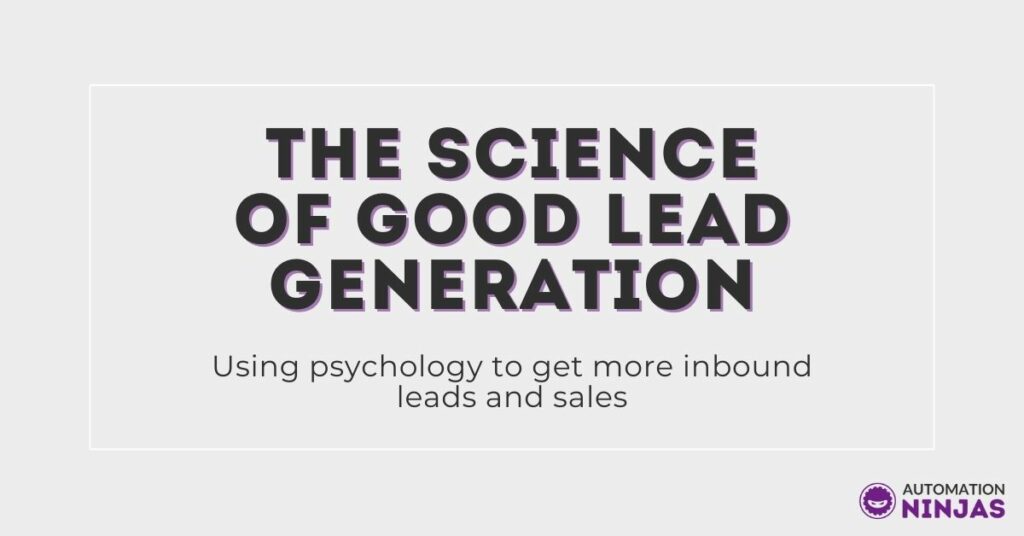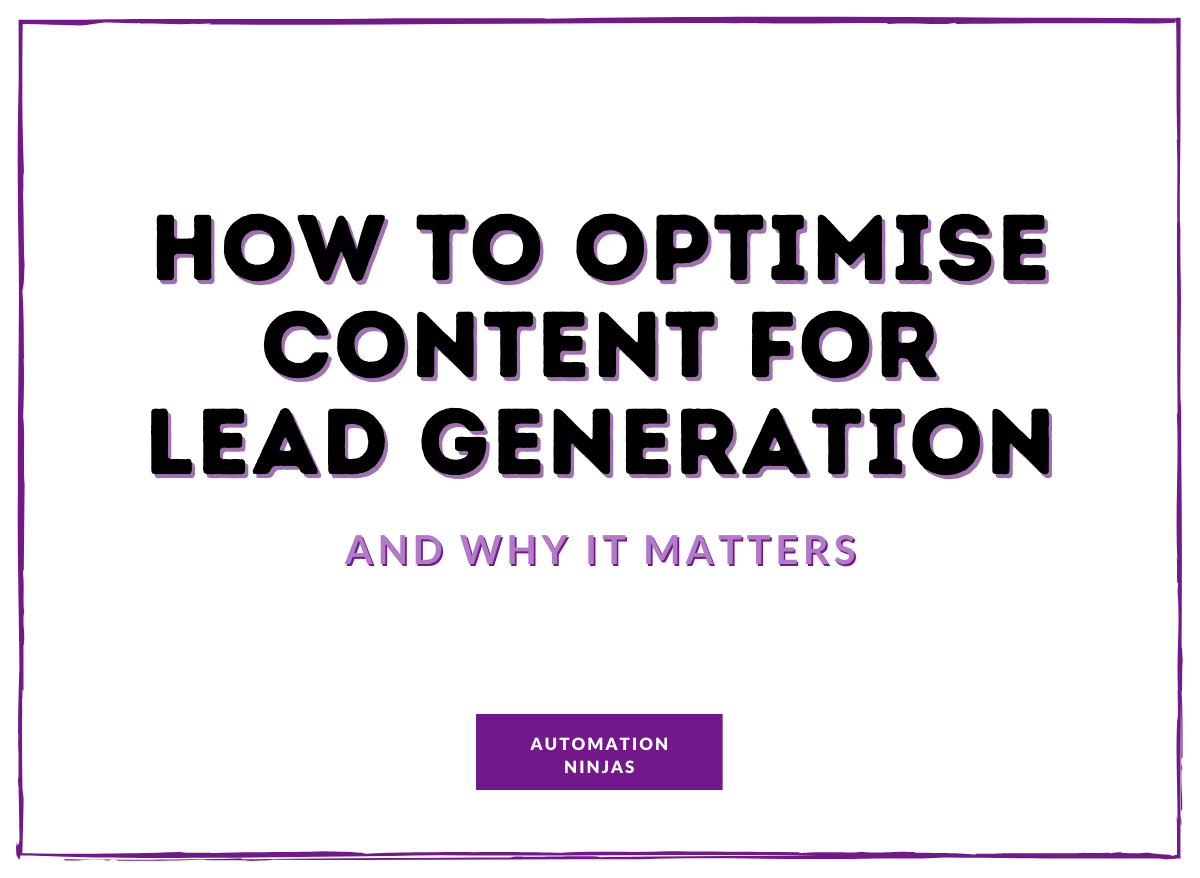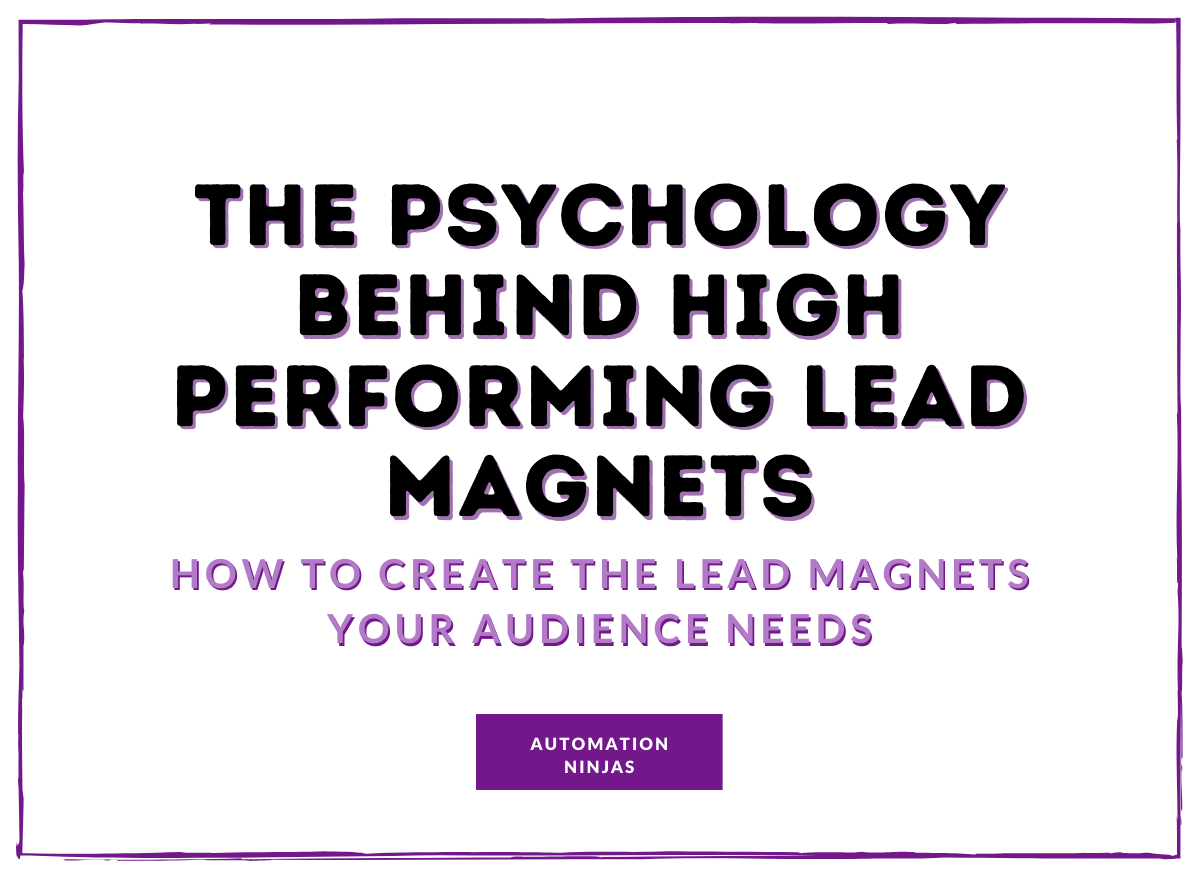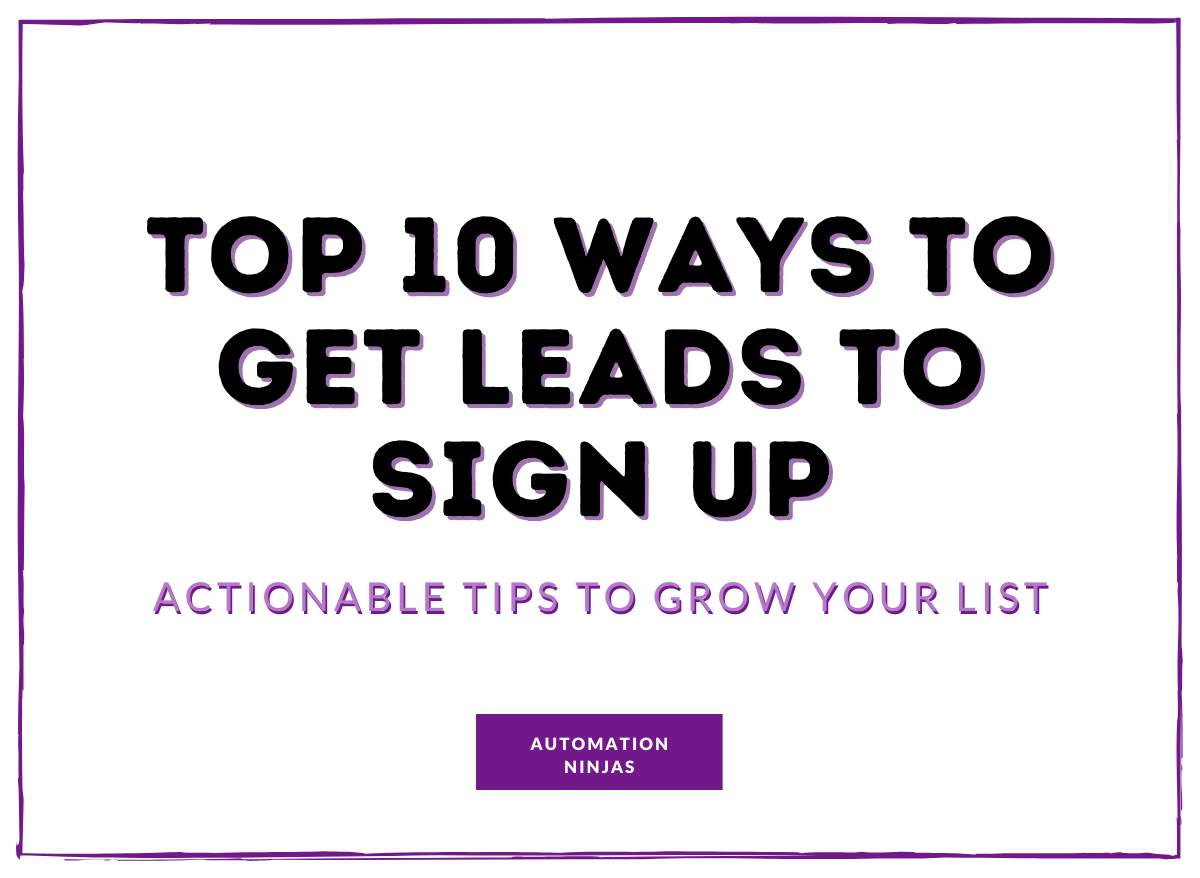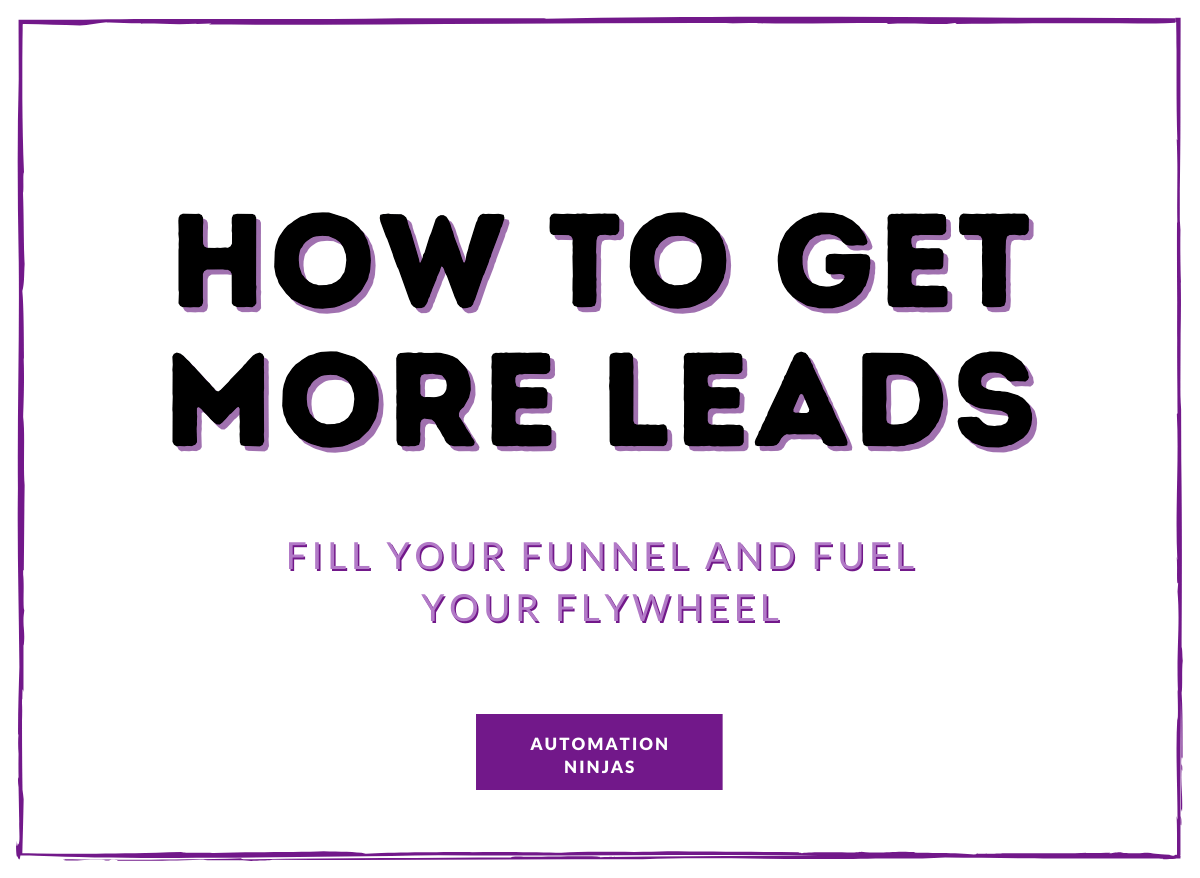AUTHOR: Kenda Macdonald
As a dedicated consultant, I specialise in elevating businesses through top-tier consultancy, fueled by a deep understanding of buyer psychology cultivated over years of experience. My expertise lies in crafting marketing and sales strategies that propel businesses to new heights by leveraging insights into the buyer brain. As a bestselling author, public speaker, and strategist, my passion for decoding human behavior drives me to innovate and deliver unparalleled results. I've designed a methodology adaptable for all types of businesses, ensuring transformative customer journeys and experiences.
Good lead generation is becoming increasingly hard to come by.
While good leads are getting harder to get, there seem to be more and more “experts” and “gurus” popping up with all kinds of new age advice on how to generate leads in the new best way possible.
Unfortunately, decent lead generation isn’t about the tools, the hacks or the secret tips. None of those exciting “fool proof methods” or “proven strategies” is going to get you the results you need.
They simply don’t work with any kind of longevity.
The truth about lead gen is all a bit… unsexy. It’s not glamorous… and it’s certainly not all that exciting…
Good lead generation is all about one thing: understanding your target audience.
This is the not so secret sauce, and I get it - it’s a little boring! Trust me, I’d love to be able to give you sexier advice on what to do and how.
But instead of throwing some good ol razzle dazzle at you - I’d love to show you exactly what works to help you generate decent quality leads that convert.
We’re going to chat about the psychology behind good lead generation, and how you can use that to get more inbound leads for sales that convert.
Sexy? No.
Effective? Yes!
Getting started with lead generation
To get started we need to go back to the basics.
You know that old saying about investing in solid foundations? This could not be more true for lead generation. It’s all about the foundations. Spend the extra time doing a little bit of ground work and it will pay for itself many times over down the line.
The foundation for lead gen is all about getting to know the ins and outs of your target audience.
There are two parts to this:
1. Understanding who they are
2. Understanding what they care about and want (in relation to you)
Without ridiculously clear vision on those two things, it’s extremely difficult to get the attention of your audience in a meaningful way.
This is what the Attract phase of the life cycle marketing framework is all about
Attracting your ideal audience
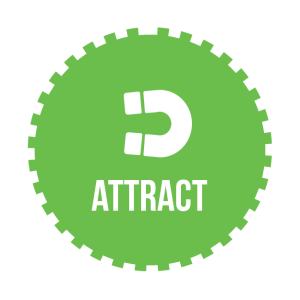
The attract phase is everything to do with getting clear on who your audience is, what they care about and how that relates to your products and services.
Attract is split up into three subsections:
1. Target
2. Attract interest
3. Collect leads
Target is all about understanding who they are and what makes them tick.
Attracting interest is about getting keyed into what you can provide of interest.
Collecting leads is all about providing something of such great value that they want to give you their email address.
And it’s target and attract interest that we need to pay particular attention to here… It’s these two stages where the psychology keys in
Target: Get clear on who they are
When you’re targeting your audience it’s all about getting to know them. Creating personas is a great way to get really clear on who your target audience really is.
Unfortunately… Most persona exercises focus on the demographics of your audience, and that’s not going to help much.
Demographics are the statistical facts. Things like “age”, and “gender”. Some of them will go as deep as “education” and “marital status”. But even so, this isn’t giving you enough information to really understand your audience.
Let's take a closer look at this with the parable of the two princes
The Prince’s Parable
A luxury car company has a new car. They want to find a specific group of people to advertise to. They work hard to create a very specific persona of their audience as follows:
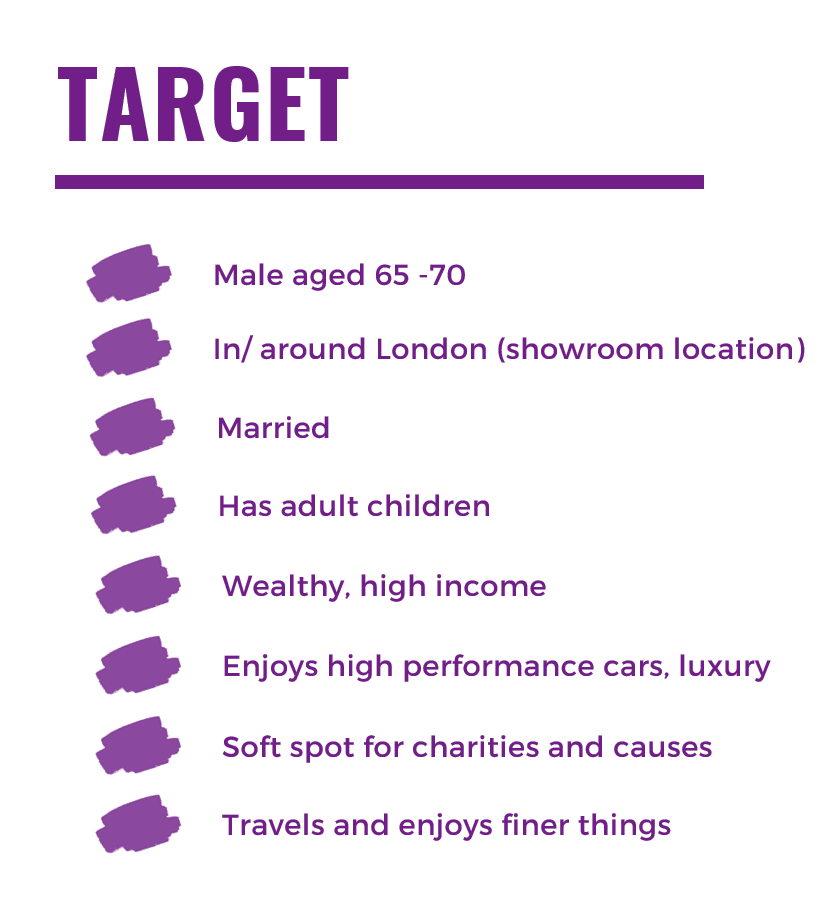
This seems super robust right? A good creative agency could create an ad for that, and a good ad company could put it in front of those people.
And that’s exactly what happens.
An ad agency goes off and finds two people that precisely match the criteria of the persona:
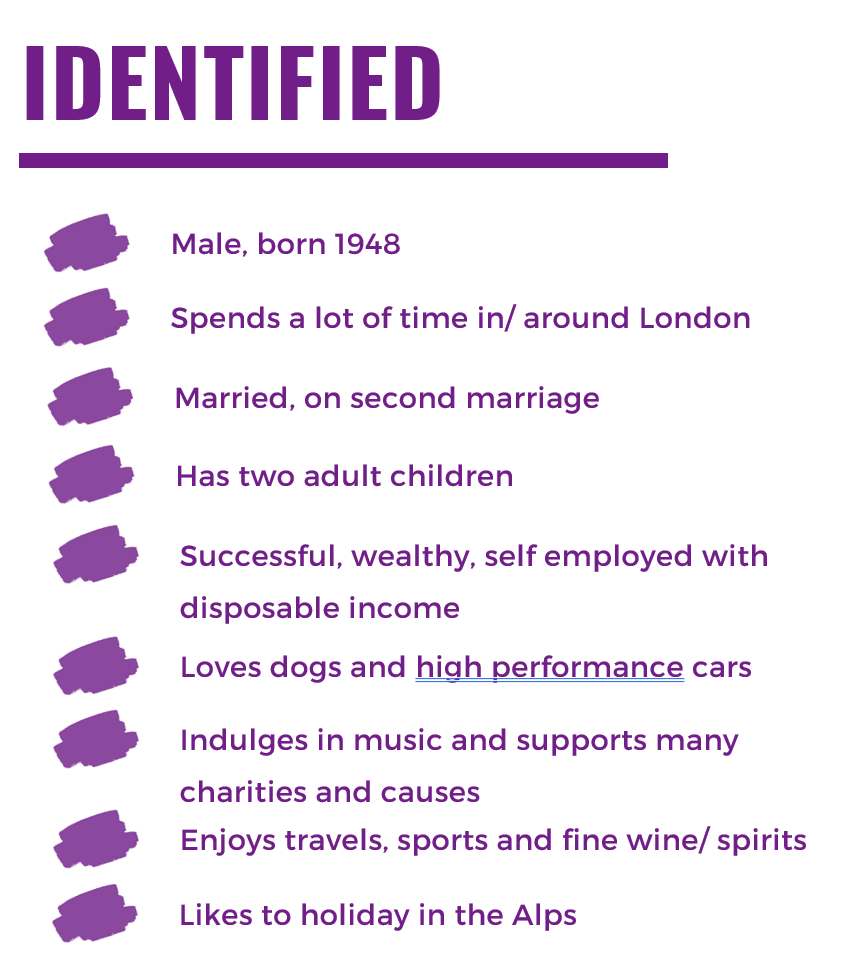
Everything seems fine - it looks perfect. On paper…
Because these two gentlemen may buy the same car… but they’ll do it for entirely different reasons, and they’ll each respond very differently to different ads.
And that’s because one is Prince Charles:

And the other is the Prince of Darkness, Ozzy Ozbourne:

This is the Prince's Parable. This exercise fails because the personas don’t take into consideration the human stuff. The bits of personality that make us like or dislike products. The gumpf that makes leads respond to advertising or copy.
These human bits are the psychographics.
Lead generation that doesn't have a solid foundation of psychographics will ultimately fail.
Getting started with psychographics for lead generation
To dip your toe in the pool and ease yourself into the world of psychology, a solid starting point is your IAO variables.
These are your target audiences:
- Interests
- Attitudes
- Opinions
Get clear on these and you’ll know how to appeal to them. You’ll understand what they like and don’t like, and what they think about it. That way you know how to talk to them and what to show them to get their attention.
Attract interest for lead generation: Get clear on what they care about
When you have your IAO variables sorted, you can start thinking about how you’re going to attract their interest in such a way that they want to give you their contact information and speak to you!
And this is where we hit our second snafu. You don’t just need to know how to fluff things up so that your offers appeal to them. You also need to know what to say.
You need to know what they are looking for, and what is valuable to them.
The problem with this is what they are looking for changes as they move along their customer journey.
As they become more conscious of their challenges and what there is out there to help them, they are moving awareness stages.
Awareness is the state they are in as they learn about what they need (you can read more about awareness here)
As they learn more about their situation, their needs and wants change relevant to where they are. That means what they care about changes.
Unaware
Problem Aware
Solution Aware
Product Aware
Most Aware
If you are clear about what awareness stage they are in, you can provide them with the right information, things they find valuable.
And it’s that special combination of knowing who they are, what makes them tick, and what they care about that makes for good lead generation.
When you know these three things it becomes much simpler to create high performing lead magnets, ads, blog posts and emails.
So do you have a well put together attract plan? How does this impact your current lead generation plans? And how well do you really know your target audience?
Want to go deeper into attract? Want to get into the nitty gritty of how to pull this information out? Want workbooks, training and challenges to help you nail your lead generation?
The Marketing Automation Academy has all this and more. With a dedicated Attract module, and over 60 foundational videos you’ll find everything you need to get moving at an insanely reasonable price.
Join the Academy
Get your marketing into shape with the help of our Ninja expertise, and join a community of go getters in the Marketing Automation Academy!

